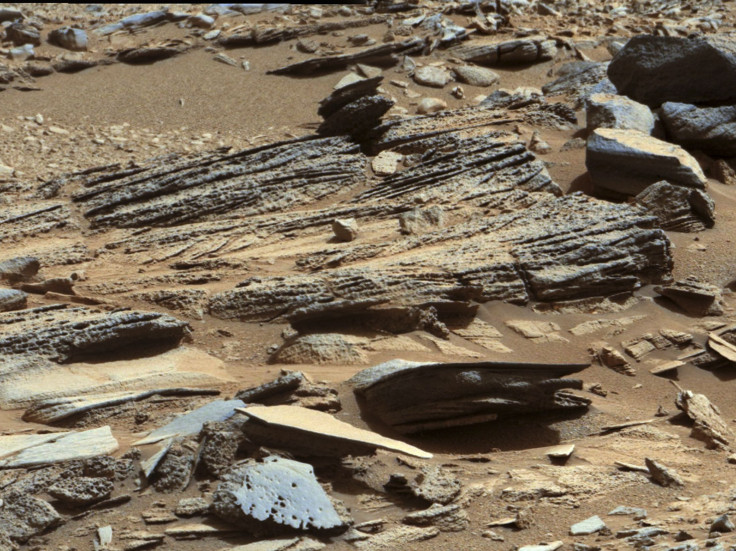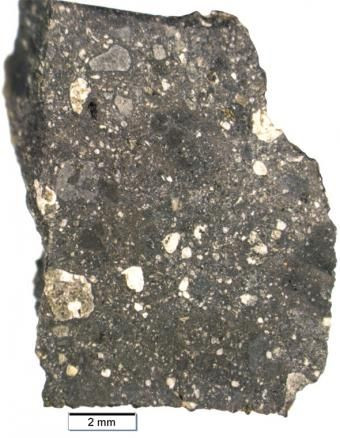Ancient Meteorite Dubbed 'Black Beauty' Was A Chunk Of Mars’ Crust: Study

Scientists have discovered that a meteorite, which was found a few years ago in the Moroccan desert, is a 4.4 billion-year-old chunk of the Martian crust. The scientists said in a new study that similar black rocks could be found in abundance on the Martian surface.
The analysis of the "NWA 7034" meteorite, which is also known by the name “Black Beauty,” reveals that the spectroscopic measurements of the rock are similar to the orbital measurements of the Martian dark plains -- areas where the coating of red dust is thin and the rocks beneath are exposed. The study has shown that the dark plains on Mars are dominated by rocks similar to “Black Beauty.” Because the dark plains have less dust, they’re thought to be representative of what lies beneath the red dust.
“Mars is punctured by over 400,000 impact craters greater than 1 km in diameter ...,” the researchers wrote in the study published last week in the journal Icarus. “Because brecciation is a natural consequence of impacts, it is expected that material similar to NWA 7034 has accumulated on Mars over time.”
The new findings have, thus, helped the scientists determine that the meteorite represents that “bulk background” of rocks on the planet’s surface.
“This is showing that if you went to Mars and picked up a chunk of crust, you’d expect it to be heavily beat up, battered, broken apart and put back together,” Kevin Cannon, a graduate student at the Brown University in Providence, Rhode Island and the study’s lead author, said in a statement.

Martian rocks that landed on Earth before “Black Beauty” were mainly igneous rocks made of cooled volcanic material.
But, according to scientists, “NWA 7034” is a fusion of different rock types welded together. The meteorite contains sedimentary components that match the chemical makeup of rocks studied by the Mars rovers. According to scientists, the rock is a piece of Martian crust, and the first such sample to arrive on Earth.
© Copyright IBTimes 2024. All rights reserved.






















